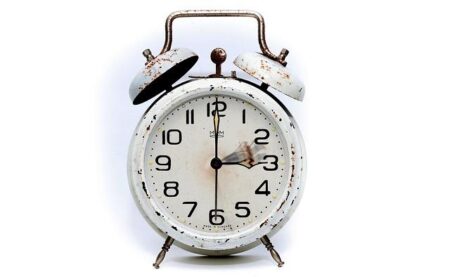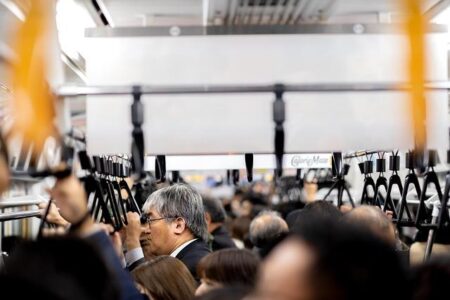Why Many New Yorkers Still Prefer MetroCards Despite OMNY’s Rise
Although the Metropolitan Transportation Authority (MTA) is steadily expanding the OMNY contactless payment system across New York City’s transit network, a notable portion of commuters continue to rely on their trusty MetroCards. These worn, familiar plastic cards remain a staple for many riders who find comfort in their simplicity, even as digital payments promise quicker, more seamless travel. This ongoing preference reveals a multifaceted dynamic involving user habits, accessibility concerns, and technological trust as the city’s transit system undergoes a significant digital overhaul.
Understanding the MetroCard Devotees in a Shifting Transit Environment
Despite the MTA’s vigorous efforts to promote OMNY, approximately 42% of riders still use MetroCards as of early 2024. For these users, the MetroCard is more than just a payment method—it represents a reliable, tangible part of their daily commute. Their hesitation to switch stems from several key factors:
- Privacy apprehensions: Many fear that digital payments could compromise their anonymity, preferring the discreet nature of a physical card.
- Technological challenges: Older adults and those less comfortable with smartphones or digital wallets find contactless payments intimidating or inaccessible.
- Uneven OMNY availability: Some riders report inconsistent or malfunctioning OMNY readers, especially during rush hours, leading to frustration.
- Ease of purchase: Physical MetroCards can be bought quickly at vending machines without needing internet access or bank accounts.
| Fare Payment Method | Percentage of Riders (Q1 2024) | Average Weekly Usage |
|---|---|---|
| MetroCard | 42% | 3.7 Swipes |
| OMNY Tap (Mobile & Contactless) | 55% | 4.1 Taps |
| Other Methods (Paper Tickets, Cash) | 3% | 1.5 Uses |
Barriers and Frustrations Fueling MetroCard Persistence
While OMNY offers the promise of a faster, more integrated fare system, several practical issues continue to drive a loyal base toward MetroCards. One major concern is the incomplete rollout of OMNY readers—currently covering about 80% of stations and buses—leaving some riders uncertain about whether they can rely solely on contactless payments during their trips.
Privacy remains a significant sticking point. Unlike MetroCards, which allow for anonymous use, OMNY transactions are linked to personal accounts, raising worries about data tracking and security. This is especially relevant in an era where digital privacy is a growing public concern.
Technical hurdles and accessibility also contribute to MetroCard’s staying power. Many seniors and individuals without smartphones or credit cards find the digital setup process daunting. Additionally, underground cellular and Wi-Fi connectivity issues can cause delays in OMNY transactions, leading to anxiety during busy commuting times.
| Challenge | MetroCard Experience | OMNY Experience |
|---|---|---|
| Reader Availability | Universal access at all stations | Coverage expanding but incomplete |
| Ease of Use | Simple swipe, no setup needed | Requires app or digital wallet setup |
| Privacy | Anonymous usage possible | Linked to personal data |
| Transaction Speed | Instant swipe | Occasional delays due to connectivity |
Operational Implications of MetroCard Retention for the MTA
The continued reliance on MetroCards presents logistical and financial challenges for the MTA. Maintaining two parallel fare systems demands extra resources, from keeping MetroCard vending machines operational to training staff to manage both technologies. This dual infrastructure increases maintenance costs and complicates customer service, as employees must troubleshoot issues across different platforms.
Moreover, the coexistence of MetroCard and OMNY complicates data collection and analysis. OMNY’s digital system offers detailed insights into rider behavior, which can inform service improvements and planning. However, the fragmented data from MetroCard users limits the MTA’s ability to fully leverage these analytics.
- Higher maintenance costs: Aging MetroCard machines require frequent repairs.
- Increased staffing demands: More personnel needed to assist with fare disputes and technical problems.
- Delayed modernization: Dual systems slow down the full transition to OMNY.
- Data fragmentation: Incomplete ridership data hampers strategic planning.
| Operational Aspect | Impact Level | Planning Challenge |
|---|---|---|
| Fare Equipment Maintenance | High | Budget constraints delaying upgrades |
| Customer Support Staffing | Medium | Resource allocation inefficiencies |
| Ridership Data Quality | High | Limits precision in service planning |
Effective Approaches to Boost OMNY Adoption Among Hesitant Riders
To encourage wider acceptance of OMNY, transit officials are implementing targeted outreach and education initiatives. Interactive workshops at community centers and transit hubs allow riders to familiarize themselves with the tap-and-go system in a supportive environment. Collaborations with trusted local figures—such as neighborhood organizers and senior advocates—help build confidence and dispel misconceptions about digital payments.
Incentives and gradual implementation are also key to easing the transition. Offering perks like discounted fares or bonus rides exclusively for OMNY users motivates trial and adoption. Meanwhile, maintaining MetroCard availability alongside OMNY for an extended period reduces anxiety, giving riders time to adjust at their own pace.
| Strategy | Primary Benefit | Illustrative Example |
|---|---|---|
| Hands-On Community Workshops | Builds user familiarity and confidence | Brooklyn Public Library Sessions |
| Partnerships with Local Leaders | Enhances trust and credibility | Endorsements from senior centers |
| Fare Discounts for OMNY Users | Encourages trial and repeat use | $1 off first 10 rides |
| Extended Dual-System Operation | Reduces transition anxiety | MetroCard and OMNY coexist for 9 months |
Conclusion: Navigating the Future of Fare Payment in NYC
As the MTA advances toward a fully digital fare collection system with OMNY, the enduring loyalty to MetroCards highlights the complexities of change in a vast urban transit network. While the majority of riders have embraced the speed and convenience of contactless payments, a significant minority remains tied to the familiarity and perceived reliability of the MetroCard. This ongoing duality reflects broader themes of technological adaptation, privacy concerns, and accessibility challenges. The future of New York City’s fare system will depend on balancing innovation with inclusivity, ensuring that all riders can confidently navigate the city’s evolving transit landscape.













